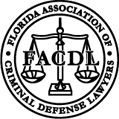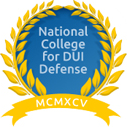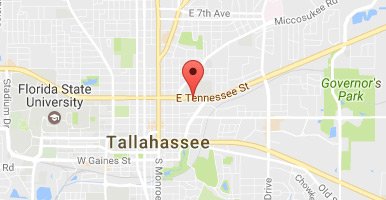- DUI
- Criminal Defense
- Florida DUI
- Traffic Offenses
- Drug Charges
- Marijuana Charges
- Violent Crimes
- Domestic Violence
- Temporary Injunctions
- Weapons Charges
- Theft Crimes
- White Collar Crime
- Juvenile Offenses
- Sex Crimes
- Violation of Probation
- Early Termination of Probation
- Seal or Expunge Criminal Record
- Criminal Appeals
- US Federal Offenses
- Misdemeanor Charges
- Felony Charges
- Co-Defendant Cases
- College Student Defense
- College Student Hearings
- FSU Students
- FAMU Students
- Florida Panhandle Arrests
- Extradition to Florida
- Bench Warrants / Warrants
- Emergency Bond Hearings
- Gambling Charges
- Drone Arrests
- Marsy’s Law
- UAS Infractions
- Introduction of Contraband
- Lying to Police
- Locations
- Case Results
- Our Firm
- Media
- Resources
- Blog
- Contact Us
What Forensic Resources are Used by the National Center for Missing & Exploited Children?
July 25, 2023 Don Pumphrey, Jr. Criminal Defense, Violent Crimes Social Share
In a criminal investigation, law enforcement will search for specific pieces of evidence to tie the responsible person to the crime. Evidence is generally defined as the information or object that is admitted into court for the judge and jury to consider when hearing a case.
One of the most persuasive forms of evidence is known as Forensic evidence. Thisis evidence obtained through scientific methods including DNA testing, blood tests, or ballistics. For example, a suspect’s DNA that matches DNA found at a crime scene is forensic evidence that could be later used against them in court.
The National Center for Missing and Exploited Children (NCMEC) works alongside law enforcement and investigators to locate missing children, provide resources to child victims and their families, and track down individuals who attempt to commit crimes against children like distribution of child pornography or sex trafficking.
NCMEC implements a large variety of forensic resources, which is helpful to understand for any person who may be facing criminal prosecution in a case involving potential forensic evidence. This blog post will provide information on NCMEC and its forensic resources.
NCMEC
NCMEC is partnered with the Office of Juvenile Justice and Delinquency Prevention (OJJDP). The organization serves as a national resource for issues relating to missing and exploited children and victims. According to OJJDP, NCMEC helped resolve cases involving 27,699 children who were reported missing in 2022.
In addition to providing helpful information for families regarding missing children, NCMEC also works with law enforcement agencies through its Child Victim Identification Program. The program utilizes what is known as the CyberTipline, an online tool allowing citizens to report any of the following suspected incidents:
- Online enticement of children for sexual activity;
- Extra-familial child sexual molestation;
- Child pornography;
- Child sex tourism;
- Child sex trafficking;
- Unsolicited obscene materials sent to children;
- Misleading domain names; and/or
- Misleading words or digital images online.
Forensic Resources
The varying forensic services NCMEC utilizes in cases involving missing or exploited children are offered to law enforcement agencies, medical examiners, and coroners. According to their site, NCMEC facilitates the following forensic services:
- Age Progression – According to the Department of Justice,age progression allows specialists to create a photograph to approximate how a child may look several years after the date they were abducted.
- Biometric Collection – The Department of Homeland Security defines biometrics as unique physical characteristics of a person used for automated recognition, such as a fingerprint. The Office of Biometric Identity Management (OBIM) provides technology for matching, storing, and sharing biometric data. Additionally, the Automated Biometric Identification System (IDENT) is operated by OBIM, holds around 300 million unique identities, and processes more than 400,000 biometric transactions every day.
- Search and Recovery – The Office of Juvenile Justice and Delinquency Prevention (OJJDP) stresses that when a child goes missing, the search and recovery process is vital, especially within the first 48 hours. Law enforcement and the missing child’s family and friends typically facilitate a search of any places where the child may have gone. The “recovery” is the ideal end scenario, with finding the missing child. Below are different types of searches which may be used by law enforcement agencies:
- Crime scene search of the areas where the child was last seen;
- Door-to-door search;
- Grid search;
- Search on land, in the air, or in a body of water; and/or
- Roadblock search, which could involve stopping cars at the same location where the child was last seen.
- Forensic Odontology – The National Institution of Health defines forensic odontology as the study and handling of dental evidence in the court of law. Forensic odontologists play a role in identifying human remains when methods such as fingerprinting and visual recognition cannot be performed. The responsibilities of a forensic odontologist include:
- Identification on human remains;
- Age estimation;
- Identification following mass fatalities;
- Assessing bite mark injuries;
- Assessing child, spousal, or elder abuse cases; and
- Civil cases involving malpractice.
- Entomology – The National Institution of Health defines forensic entomology as the study of insects and arthropods in a criminal investigation. In a criminal case, an entomologist may be called to inspect any insects or eggs inside a decomposing body. The insect population and developing larval stages can help forensic scientists determine the postmortem index (time that has elapsed since the victim’s death), any changes to a corpse’s position, and potentially the cause of death.
- Exhumation Assistance – To “exhume” means to dig up a dead body either for medical or investigative purposes. In a missing persons case, law enforcement may request for an exhumation if their search leads to a body. Florida Statutes §497.384 explains that disintermenting or reintermenting (dig up and re-bury) human remains requires the physical presence of a licensed funeral director who obtains a written authorization from a legally authorized person or court of competent jurisdiction.
- Facial Comparison – A study by the National Institution of Health explains that forensic facial comparison involves the human-based, detailed analysis of facial images to identify suspects or victims in a criminal investigation. Approaches for forensic facial comparison (FFC) include photo-anthropometry, facial superimposition, and morphological analysis (MA). The MA application includes examining specific facial features of two or more faces to reach a conclusion on similarity or differences. The specific features to compare typically include:
- Hairline shape
- Ear helix morphology
- Nasal alae protrusion
- Scars
- Blemishes
- Piercings
- Tattoos
- Overall facial composition and structure
- Soil Analysis – Forensic soil analysis is defined as the use of soil science and other disciplines including geo-chemistry and geology to help solve criminal investigations. Soil contains various, unique properties that can help serve as an identification marker. For example, a suspect found with clay inside their shoe may be traced back to a specific area where a murder victim was buried.
- Vehicle Forensics – Law enforcement may request a forensic analysis of a suspect’s motor vehicle to search for key evidence. The Office of Justice Programs (OJP) explains that until the specific type of crime is determined, the forensic vehicle investigators will assume that all types of evidence are present. Common types of evidence found in a motor vehicle include:
- Fingerprints
- Photographs
- DNA
- Fibers
- Paint
- Drugs
- Drug paraphernalia
- Incriminating papers
- Ballistic evidence
- Facial Reconstructions from Skeletal Remains – In criminal cases where traditional methods such as examining dental records, DNA analysis, or radiography cannot be used to identify the remains of a corpse, investigators may conduct facial reconstruction. The National Institute of Health explains that forensic facial reconstruction is both a scientific method and an art form. There are two types of reconstruction techniques: two dimensional (2D), or three dimensional (3D). Two dimensional techniques recreate a face from the skull with soft tissue depth estimates. Three dimensional techniques can use clay, plastic, or wax directly onto the victim’s skull or a replica of the skull to be identified.
- Forensic Anthropology – In criminal investigations where human remains or a suspected burial is found, law enforcement may call upon a forensic anthropologist to conduct a skeletal analysis. Specifically, forensic anthropologists can gather information from a skeleton to help determine identification, cause of death, and how long it has been since the victim’s death.
- Forensic Genealogy – The Department of Justice defines forensic genealogy as the use of DNA evidence and analysis combined with genealogy research to create investigative leads for unsolved violent crimes. It is possible for investigators to analyze the blocks of genetic information and make inferences regarding any potential familial relationships. An example of this technique being used was the breakthrough in identifying the Golden State Killer in 2018.
- Image and Audio Enhancement – When law enforcement has video or audio evidence that needs improvement, the process they use is called image and audio enhancement. For example, an alleged criminal offense that was recorded by a surveillance video outside of a gas station could result in law enforcement requesting image and audio enhancing for the clearest results.
Video enhancement techniques include:
- Sharpening – Making the edges of an image or video recording clearer.
- Video stabilization – Producing the smoothest playback by reducing the video’s movement.
- Masking – Covering areas or faces of those in a video who are considered a victim, witness, or law enforcement officer.
- Interlacing – The technique of combining two TV fields to produce a full frame of a video through interlaced scanning of recorded images.
- Demultiplexing – The isolation of an individual camera using a device called a multiplexer, that combines multiple video signals into a single signal or separate a combined signal.
Audio enhancement techniques include:
- Frequency equalization – If the audio recording needs the speech to be more intelligible, an equalizer can be used to amplify or isolate the frequency band which contains most speech content.
- Compression – If an audio recording has any faint sounds, either compressing or leveling the signal can result in the dynamic range being reduced and making softer sounds more apparent.
- Fingerprint and Latent Print Examinators – A latent print examiner compares fingerprints at a crime scene. Fingerprints can be found on almost any solid surface, including on the human body. Patent prints are considered visible evidence such as blood, dirt, and paint. Latent prints are an invisible print formed when the natural oils and sweat in the human body are deposited onto another surface. Patent prints are collected by simple photography with a high resolution, and latent prints are collected by dusting fingerprint powder onto a smooth surface.
- Phenotyping – DNA phenotyping is the science of predicting the physical appearance or ancestry of a person by only using genetic information from DNA sequencing or genotyping. According to the National Institute of Health (NIH), the three methods of DNA phenotype include:
- Prediction of externally visible characteristics;
- Biogeographic ancestry; and
- Estimation of age from crime scene DNA.
- Pollen Analysis – Palynology is considered the study of pollen and spores in an archaeological or geological context. NIH explains that pollen analysis can be used in palynology to help solve legal cases. Pollen grains have been found to remain at a crime scene for an extended period. Due to their small size being highly variable and being found on things that are exposed or interact with the air, pollen grains are ideal for forensic investigations. Potential evidence that can be sent in for a pollen analysis and isolation include:
- Soil
- Rope
- Twine
- Clothing
- Drugs
- Air filters
- Plant material
- Animal fur
- Human hair
- Stomach contents
- Database Uploads and Searches – The forensic examination of databases and their metadata or using electronically stored data to identify evidence of a criminal offense. The FBI use both the National DNA Index System (NDIS) and Combined DNA Index System (CODIS) to analyze DNA profiles and other important information in a criminal case.
If you are being investigated for a criminal offense alleged by NCMEC, finding a defense attorney to represent you is crucial to your case. Crimes against children are prosecuted harshly in Florida, with the prosecution likely pushing for the highest form of the statutes’ penalties.
Additionally, it is important to become familiar with the various types of forensic resources which may be utilized in a criminal case. An experienced Tallahassee criminal defense attorney may advise working with a forensic expert witness for any cross-examination of the State’s forensic evidence to search for any holes in the evidence.
Need a Defense Attorney? Contact Pumphrey Law Firm
Forensic evidence is often the final piece to secure a defendant’s conviction. However, it is important to remember that even with the ever-growing field of forensic science, there still may be errors in the specific process. Don Pumphrey and his team can help build defenses against criminal allegations and refer an expert witness to look for any incorrect analyses from the forensic evidence.
If you or a loved one has been arrested for a crime against children in Tallahassee or the surrounding areas, contact Pumphrey Law Firm today. We vow to fight for your freedom and earn back your future when you call (850) 681-7777 or leave a message on our website.
Written by Karissa Key










